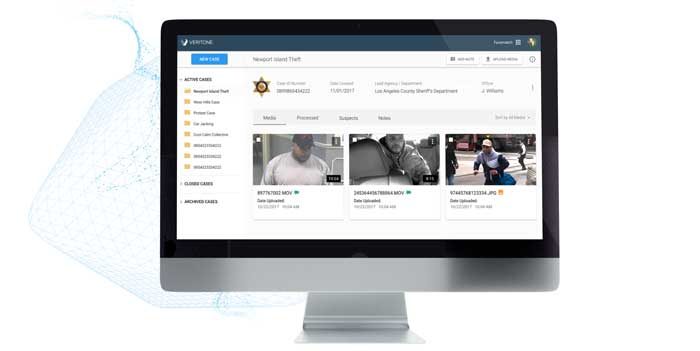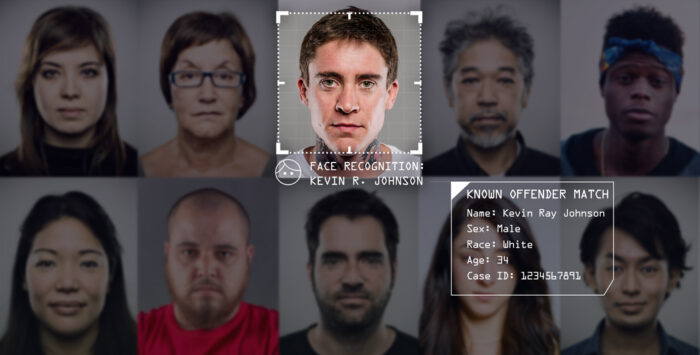Solution Brief
Intelligent, Rapid Suspect Identification for Criminal Investigation and Law Enforcement
Leverage booking databases and digital evidence to quickly link known offenders to criminal activity with the Veritone IDentify™ solution
EXECUTIVE SUMMARY
Despite public perception, even when criminals are caught on camera, police still have their work cut out for them to identify a suspect and connect them to the crime. The vast majority of police agencies still rely on outdated methods to accomplish this -- manually sifting through masses of arrest records, turning to colleagues for intel and even promoting the case publicly to identify their person of interest. This is mainly due to the fact that many agencies lack the resources and tools to effectively search against their database of known offenders, previously arrested or booked individuals, or run facial recognition to streamline the process. The current manual processes require significant time and resources and, as a result, many departments are forced to prioritize only serious or high-profile crimes, leaving many cases unsolved. This brief sets out how Veritone’s IDentify solution empowers law enforcement agencies to substantially increase operational effectivity for a fraction of the cost by streamlining investigative workflows and identifying suspects faster than ever before.
TODAY'S CHALLENGES
Rich Arrest Data, Limited Insight
Investigating crimes today is much like trying to drink from a firehose. Agencies now have access to unprecedented volumes of video footage generated by an ever-expanding array of department-owned and public sources, but it is nearly impossible to sift through it all. Booking databases provide agencies with access to a treasure trove of information including names, faces, arrest records and other information detailing current or previously detained individuals. Correlating this information to crime scene footage can help identify suspects, solve crimes and build iron-clad cases. Unfortunately, this valuable information is often difficult to effectively leverage during an investigation. Historically there has not been a systematic way for agencies to simply compare crime scene footage against booking databases.
Booking databases provide agencies with access to a treasure trove of information including names, faces, arrest records and other information detailing current or previously detained individuals. Correlating this information to crime scene footage can help identify suspects, solve crimes and build iron-clad cases. Unfortunately, this valuable information is often difficult to effectively leverage during an investigation. Historically there has not been a systematic way for agencies to simply compare crime scene footage against booking databases.Outdated Workflows
To identify a suspect, investigators traditionally rely on intel from their department first and then move on to the painstaking process of manually comparing booking database records against crime scene footage. Furthermore, many agencies do not have a database of their own known offenders built in an accessible or searchable manner, which results in a difficult and time-consuming process.
Reviewing thousands of records and comparing them to digital evidence requires the investigator to spend the majority of their time at their desk, focusing on the administrative tasks to organize and label evidence itself instead of proactive police work. As databases and crime scene footage continue to grow, these manual workflows simply are not scalable. Agencies are forced to utilize high earning investigators for this process, significantly reducing the number of cases they are able to manage effectively. As a result, cases accumulate, forcing agencies to prioritize serious offenses and leaving many crimes unsolved.
SOLUTION
Improving Investigative Workflows with AI
The introduction of artificial intelligence (AI) for law enforcement will have a significant impact on agency productivity and crime-solving capabilities. AI proves to be the long-awaited force multiplier for agencies, automating a once manual process and delivering actionable suspect intelligence in record time. By using AI-based systems, particularly those powered with facial recognition, public safety agencies can now analyze and leverage far more of their digital evidence. Facial recognition AI engines quickly comb through massive datasets at incredible speed, providing actionable insights in less time and with less manpower, helping agencies solve cases large and small.
How It Works: Harnessing AI to Identify Suspects
A new solution tailored for public safety agencies allows investigators to minimize manual processes and quickly link known offenders to criminal activity. This is accomplished through cutting-edge facial recognition technology supported by a robust digital evidence toolkit. Veritone IDentify enables agencies to quickly compare their known offenders against crime scene footage, saving valuable time and resources. Once the agency’s booking and persons of interest databases have been setup, investigators can create “cases” in IDentify and associate digital evidence with each case for IDentify to automatically compare detected faces in evidence to the agency’s databases. IDentify returns all matches complete with the pertinent booking information included in the database organized by match certainty for investigators to review and mark as a suspect or dismiss. Once a possible suspect has been identified, the investigator confirms the match, then may optionally attach pertinent notes within IDentify to be shared with others across the agency.
IDENTIFY IN ACTION

IDENTIFY WORKFLOW

Unknown faces generated from crime scene footage but not present in the department’s databases, are reviewable in a list for investigators to dismiss or add to the existing Persons of Interest database. This expanded database can be leveraged to compare unknown individuals and notify investigators when they are looking at the same individual.
IDentify optimizes workflows for investigative teams. Teams can seamlessly manage and track case evidence associated with an investigation from one centralized location and apply status labels related to such evidence such as active, closed, or archived. Notes and case details, such as case ID, department, officer ID, case description, location and time, can be added to the case in IDentify. To save time and money, investigators are able to trim digital evidence files to process only particular file segments and to select specific persons of interest for more focused face recognition and evidence review.
Learn more about Automated Suspect Identification in this recorded presentation focusing on solutions for Law Enforcement.